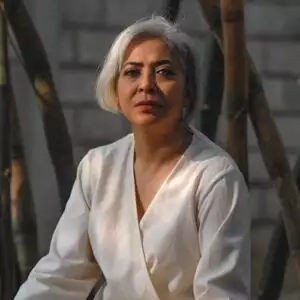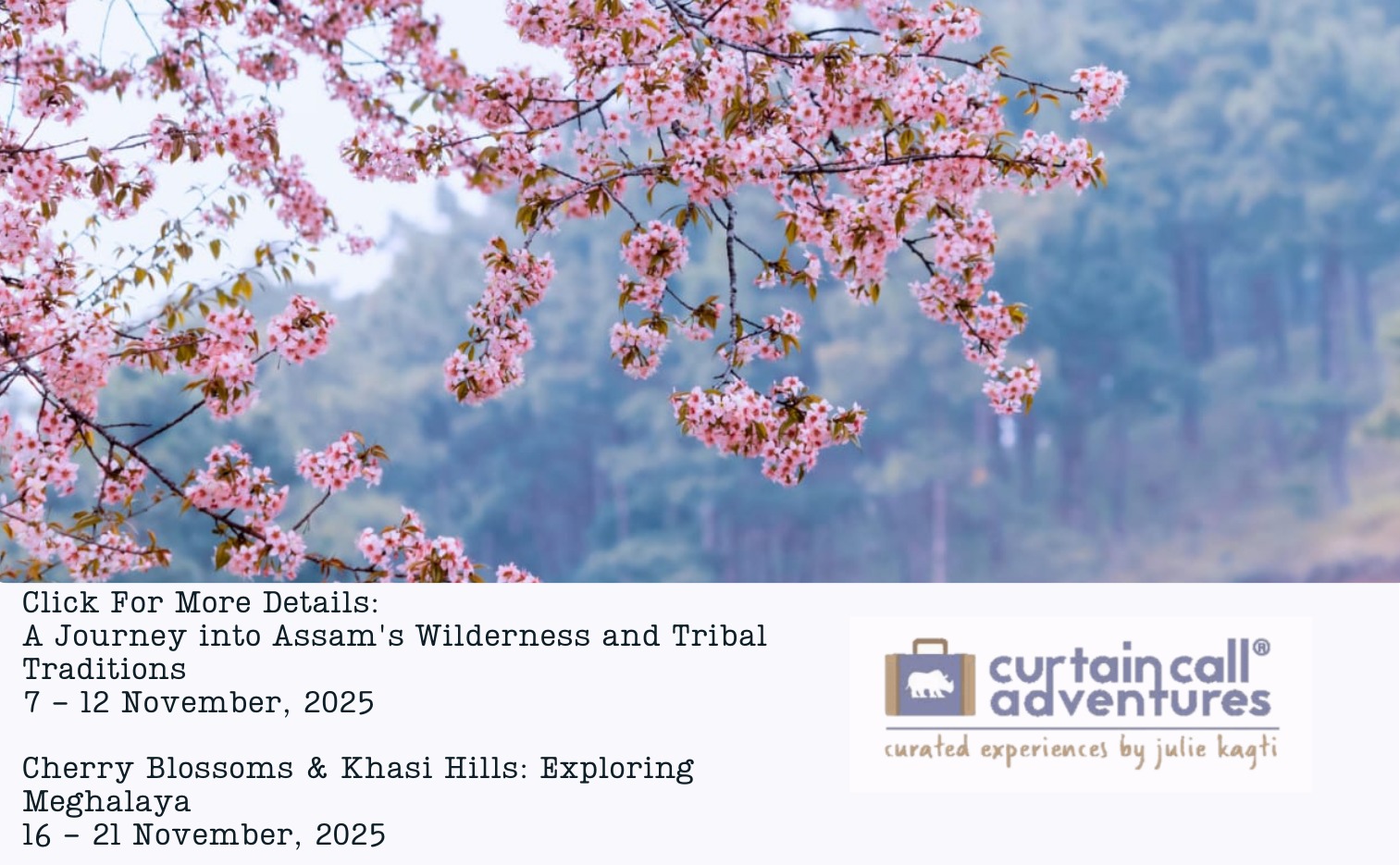Since learning to weave from my grandmother, whom I lovingly call Aita, in 1978-79, I have been in awe of the region’s vibrant tapestry. With each trip I make—whether on a solo recce or with guests—I feel like I am stepping into a fresh story woven into the very fabric of this enchanting land. It is truly thrilling, especially for me, to curate travel experiences for guests to visit weaver homes and witness firsthand the artistry and culture that define Assam.
I can still recall my initial arrival: the thrill of gliding over lush green fields, the warm sun casting a golden glow over the landscape as it unveiled the beauty of rural Assam. Touching down in a world rich with culture and craftsmanship, the air seemed to hum with the intricate rhythms of looms at work.
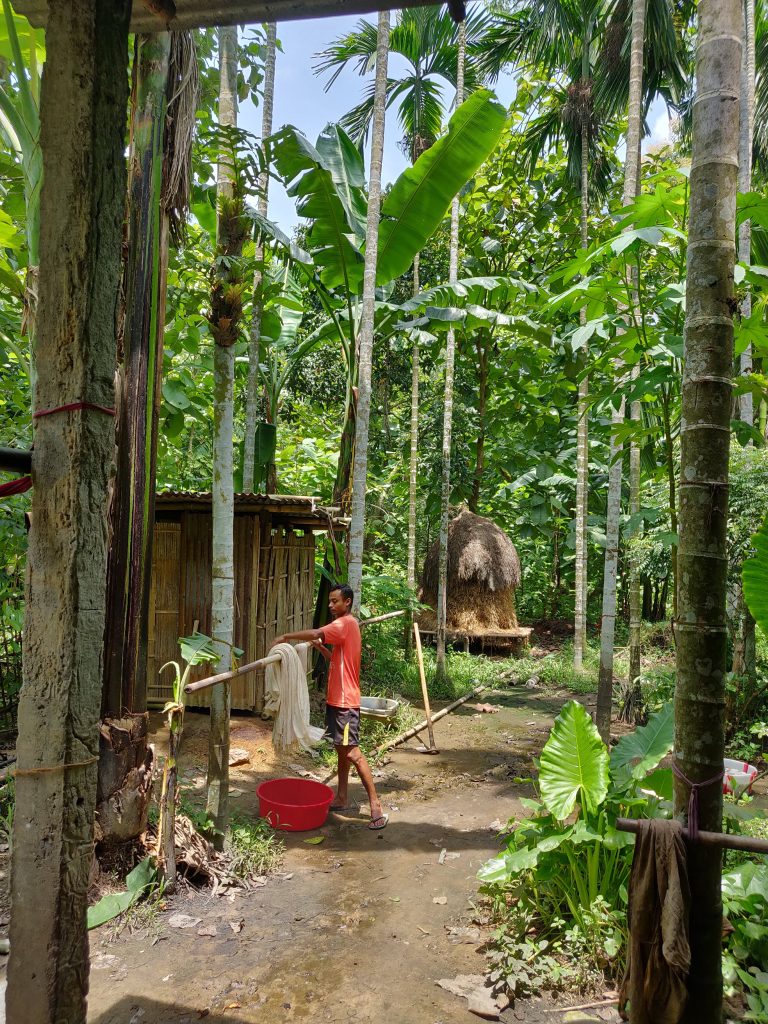
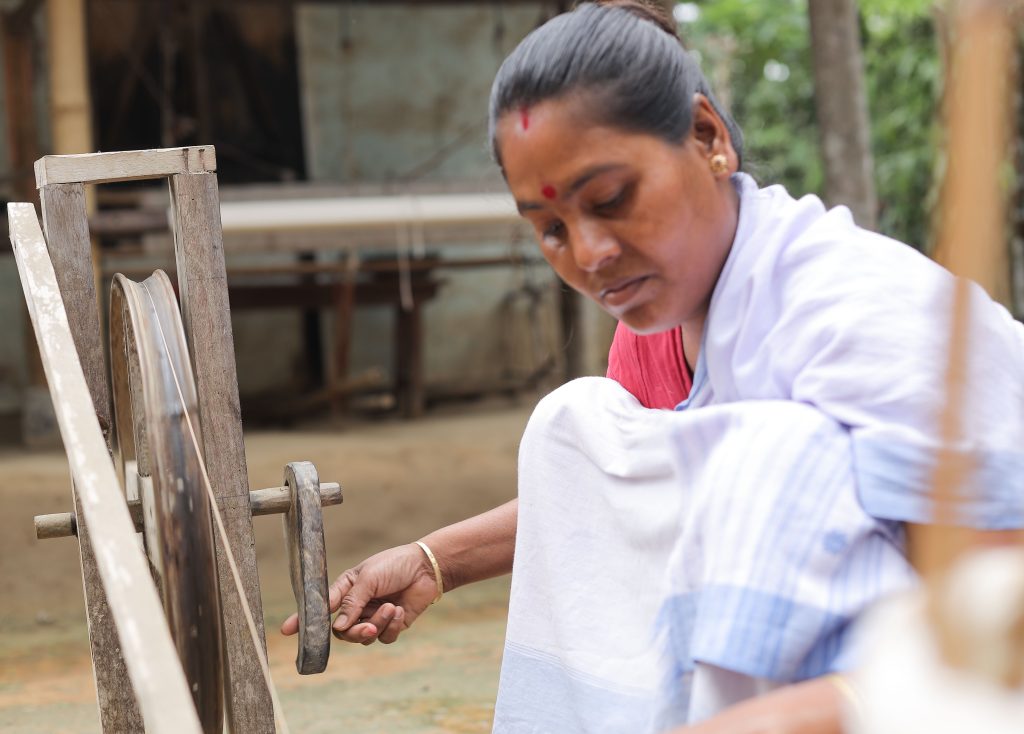
Here, I was welcomed with warm smiles and a hearty “namaskar,” inviting me to share in their world, where each piece carries stories of heritage and hope. Some of the places where the interactions truly transformed the experience for me.
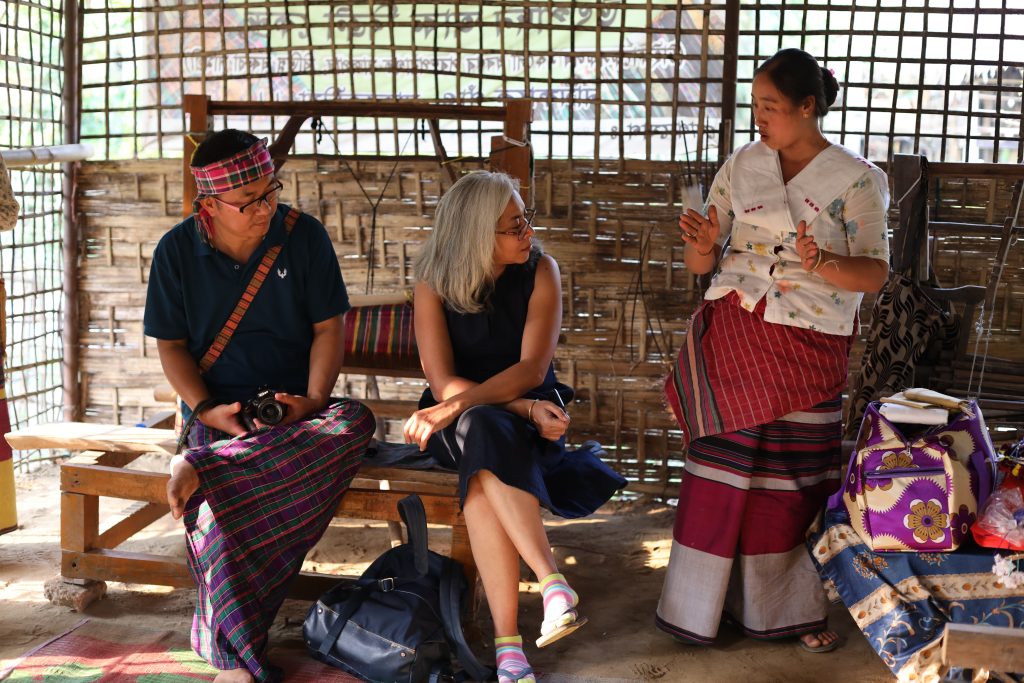
The Art of Bodo Weaving at Rowta Sumliguri
One of the highlights of my exploration was spending time with the weavers at Rowta Sumliguri. My visit began with a tour of a local home, where I had the privilege of witnessing their traditional worship ritual. This involves a sacred plant that holds significant meaning for the Bodo community, symbolizing their connection to their roots and beliefs.
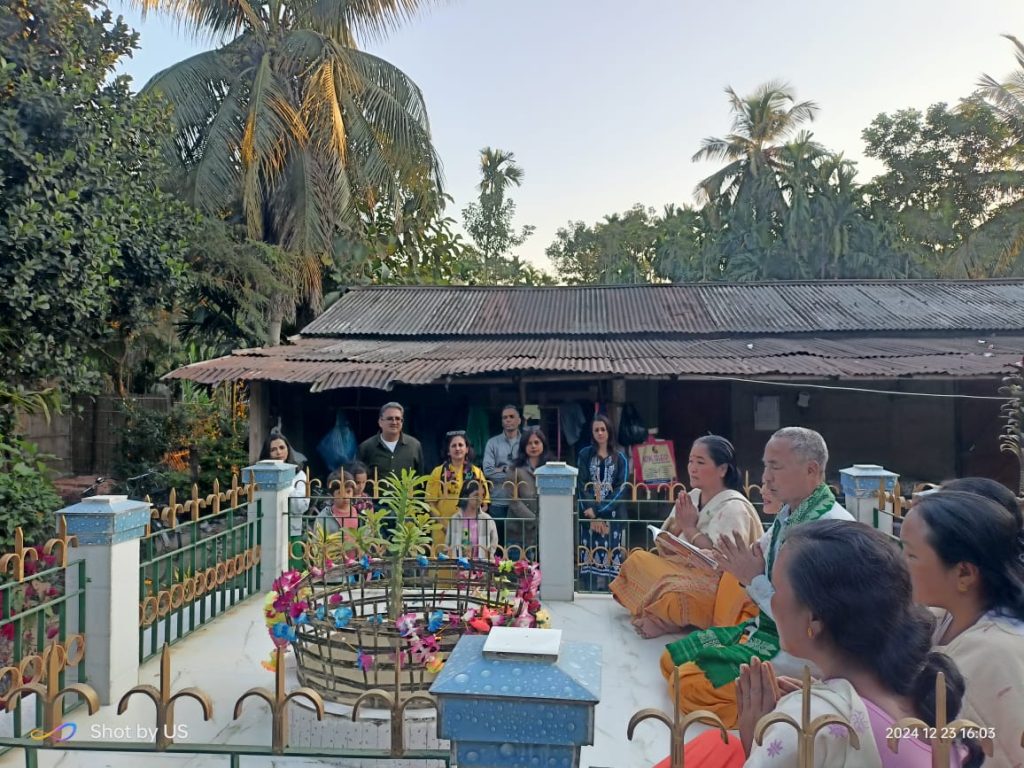
After this enriching experience, I caught a demonstration of eri spinning and weaving, a testament to the artisans’ skill and dedication. The rhythmic clattering of the loom created a melody that resonated in my heart. I was then invited to walk through the village to a sericulture unit center, where I observed how eri silkworms are cared for and reared, a critical part of the weaving process.
The artisans spoke passionately about their craft, and as I listened, I marveled at how each colorful pattern not only represented their individuality but also told stories woven from their history and culture.
Renowned for their unique textile designs, they embody their culture: vibrant hues, intricate geometric patterns, and a sense of identity deeply rooted in their history. I marveled at the artisans skillfully working their looms, weaving not just fabric but the essence of their community into every thread.
As they shared their process, the weavers spoke with pride about their traditional attire, often donned during festivals and cultural gatherings. The ‘dokhona’ for women, a stunning wrap, and the ‘gamocha’ for men, a multi-functional piece, serve as symbols of identity and warmth. Every stitch, every colorful pattern spoke volumes of their heritage, intertwining personal stories with the legacy of their forefathers.
The Mising Tribals: Threads of Tradition in Majuli
Venturing further led me to explore a Mising village in Majuli, a cultural tapestry rich in traditions and everyday life. Here, I immersed myself in local architecture, with homesteads adorned with kitchen gardens displaying vibrant vegetables and herbs. I was enchanted by the fishing baskets handmade by the locals, each one a testament to their resourcefulness.
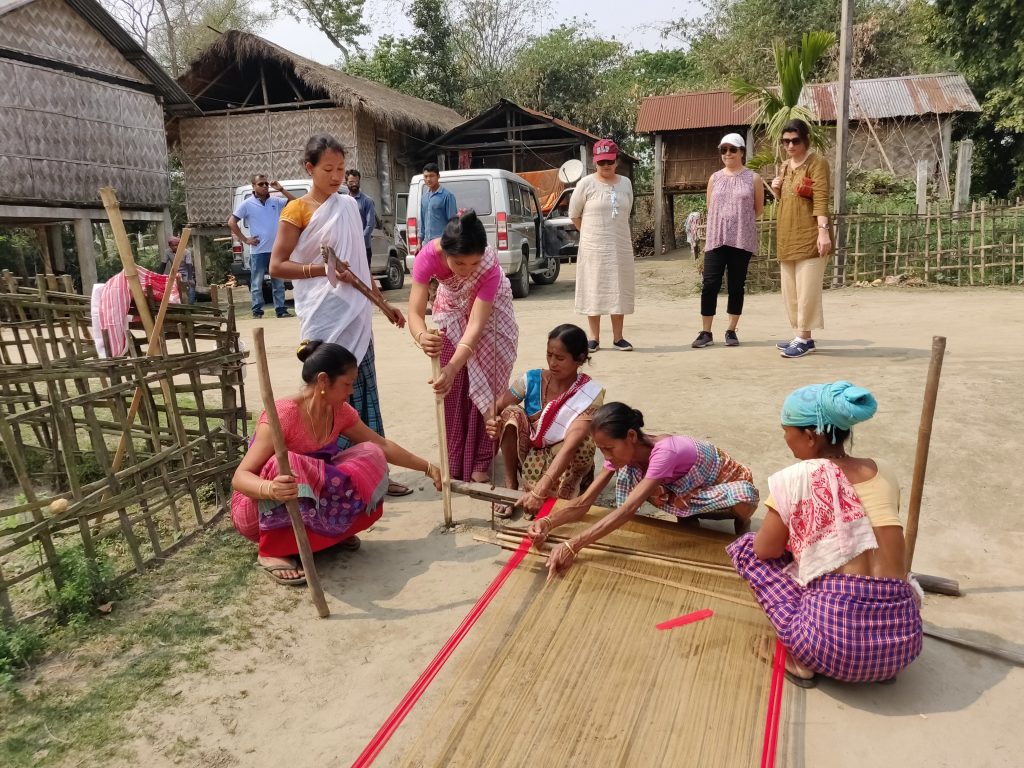
Sitting around the kitchen fireplace, I was treated to a traditional meal and a glass of homemade rice beer, savoring the warmth of their hospitality. Shopping directly from these skilled weavers is a true delight; weaving is not just a craft for them but a domestic art passed down through generations. I even tried my hand at creating a piece or two to sell, embracing the spirit of their craftsmanship.
Mising textiles are distinguished by their bold colours, patterns and sustainable practices, reflecting their respect for the environment.
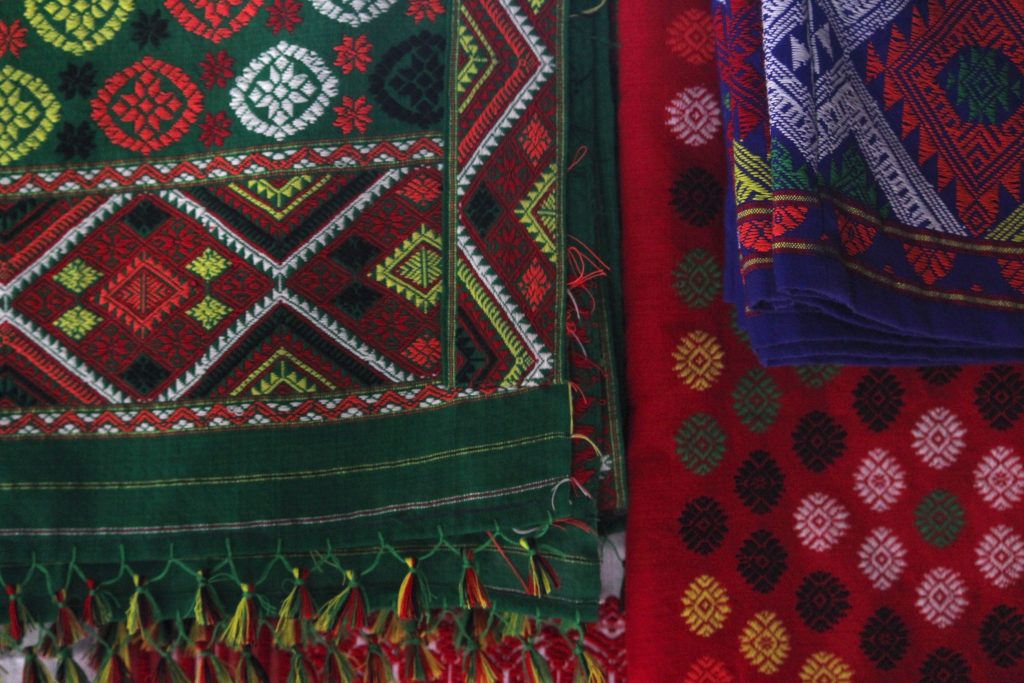
During my visit to their weaving centers, I learned that their fabrics often depict the enchanting flora and fauna of the region. The artisans not only shared their techniques but also the significance of each motif that tells the tales of their relationship with the land.
The Elegance of Eri Silk Spinners in Bijoy Nagar
One cannot visit Assam without experiencing the wonders of ‘eri silk’, often celebrated as “peace silk.” The sustainable harvesting methods embraced by the eri silk spinners resonate deeply with the values upheld by the artisans. Witnessing the entire process—from raising the silkworms to the delicate spinning of silk fibers—was a revelation.My adventure took me to Bijoy Nagar,where I participated in an eri hand-spinning session. Laughter and chatter filled the air, but my attempts at spinning yielded very little yarn. It was humbling to realize that although the women made it seem effortless, it requires immense skill and practice.
The artisans welcomed me into their homes, offering tea and sharing the intricacies of their craft. It was a humbling experience to witness their dedication and the joy they find in creating beautiful, eco-friendly textiles that also honor the life cycle of the silkworms.
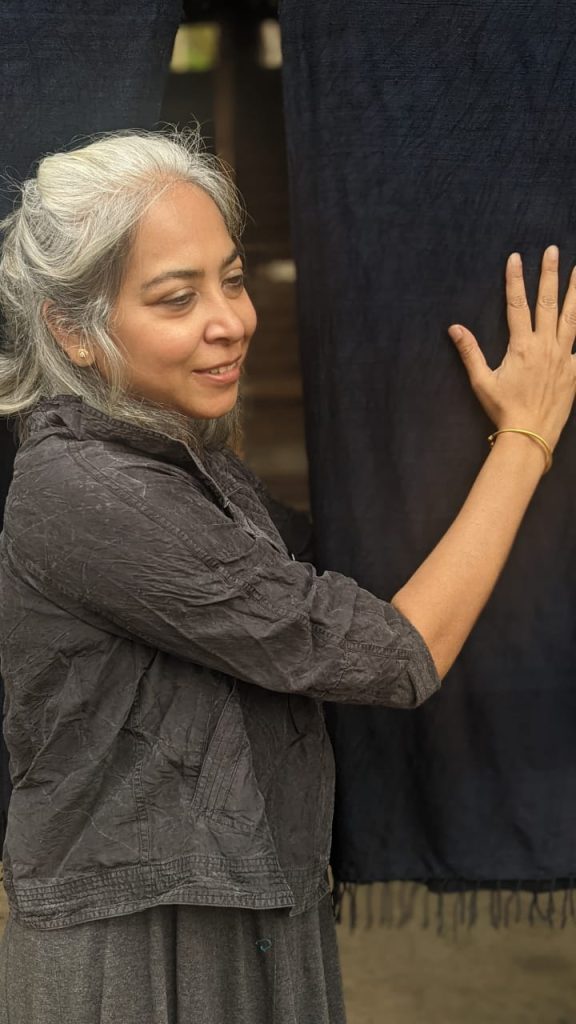
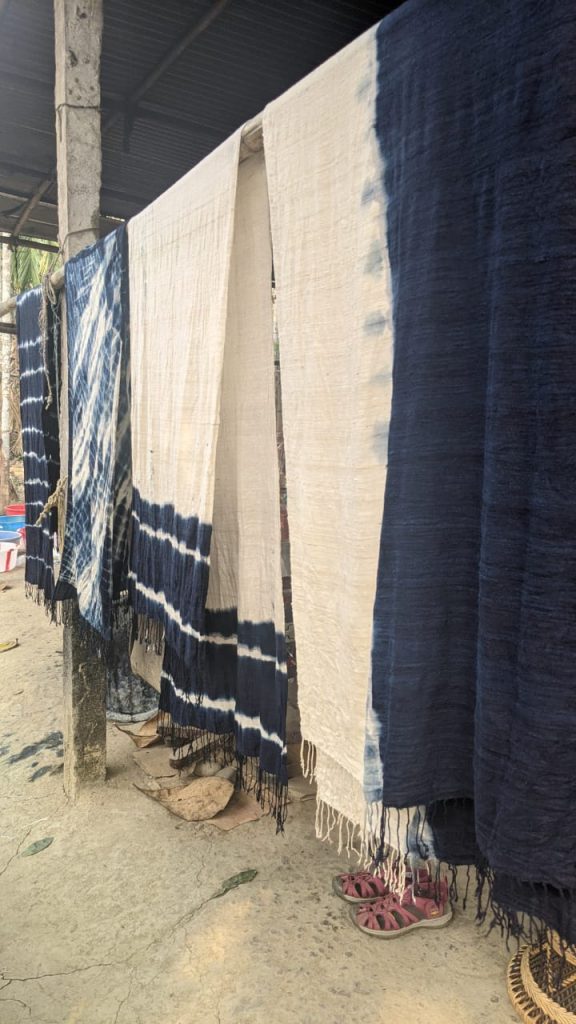
Our guests love their natural dye session with a master dyer here to create their own artisanal scarf. One guest named the workshop as ‘ Dye your Menu’ since a lot of the raw materials come from daily use vegetables from the kitchen.
The Richness of Muga Silk
My journey led me to the breathtaking forest patch at Dhakuakhana, located on the northern bank of the Brahmaputra River. Here, I was able to witness how the famous indigenous silks of Assam—eri and muga—are reared in their natural habitat. Local women kindly demonstrated how fiber is extracted from the cocoons and woven into fabric, introducing me to muga—the golden yarn of Assam. Please remember to carry cash if you wish to buy directly from them.
As I spoke to the muga artisans, I could feel their passion for their craft. Much like the muga itself, their stories were rich and layered, explaining how this silk plays a vital role in cultural celebrations and ceremonies, symbolizing prosperity and joy.
Historically, muga was referred to as “rough cloth,” worn by Assamese women as part of their domestic attire due to its sturdy texture and strength. Today, this golden silk has earned its status as one of the most expensive silks in the world, proudly gracing the homes of affluent Assamese families.
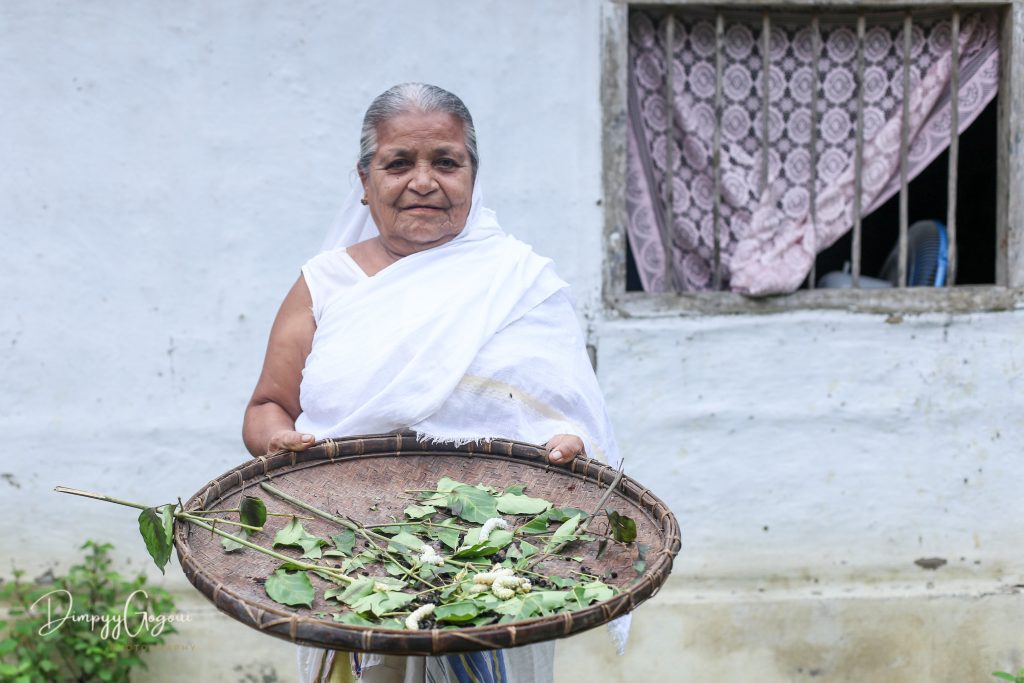
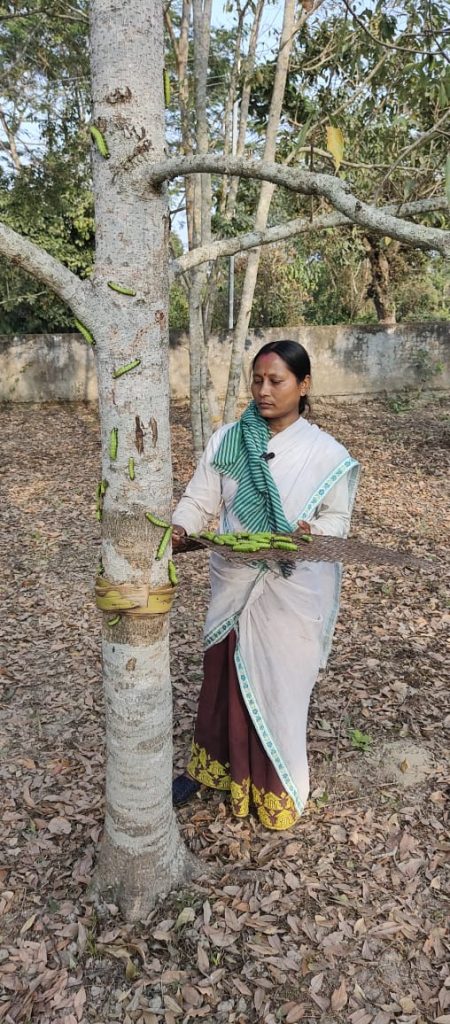
A simple Ahom-style lunch was arranged at a local home, where I learned about the Ahoms, who came from the Thai-Burmese border and ruled Assam for 600 years. Their introduction of eri and Muga silk to the region is among their most significant contributions, enriching the cultural heritage of Assam.
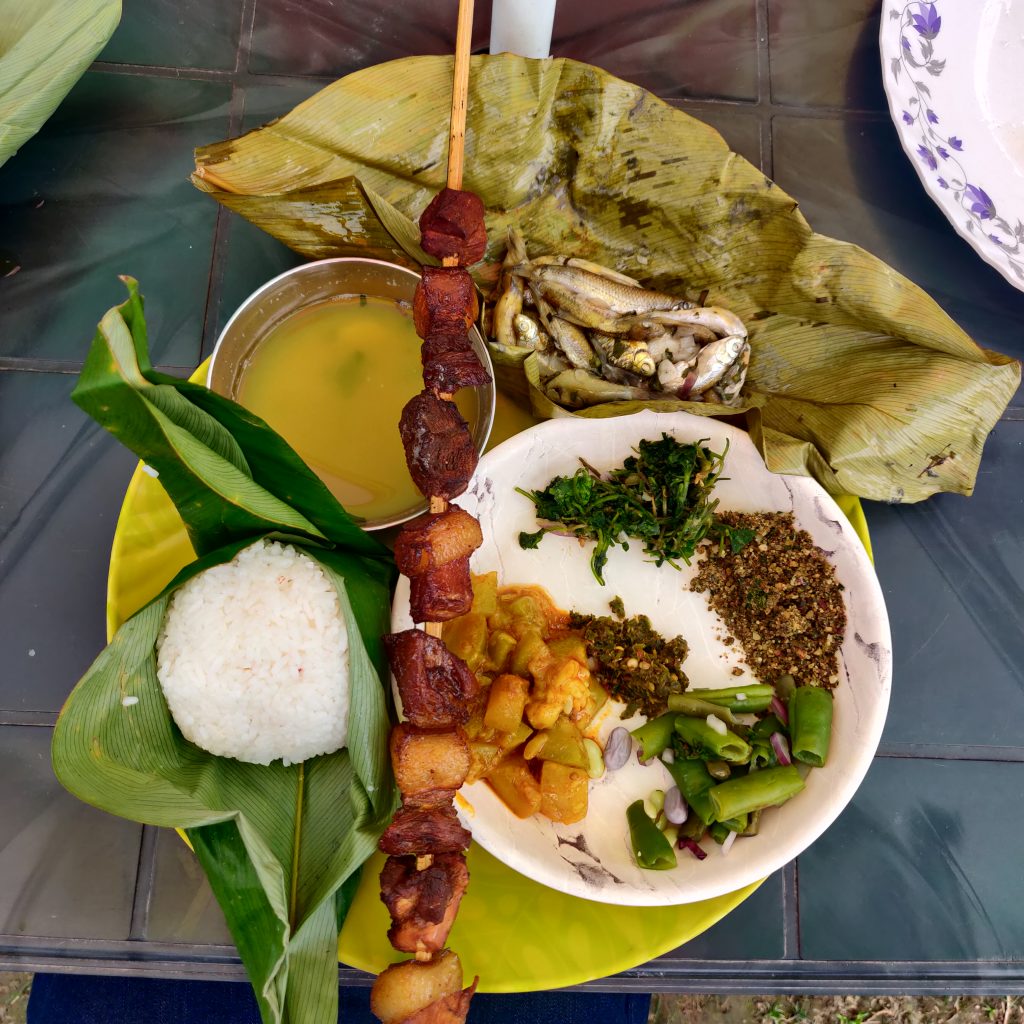
From a menace to a design challenge
At the ‘North Eastern Handicraft and Handloom Development Corporation Limited’ center and workshop at Garchuk, I was treated to demonstrations showcasing how natural fibers like bamboo and water hyacinth are ingeniously transformed into lifestyle products, such as baskets, mats, and bags. The exhibition of old bamboo and cane baskets, intricately detailed, was a testament to the region’s handicraft heritage.
At another government supported center I learned about the menace of water hyacinth in Assam’s waterways. I was intrigued to see how the ‘North Eastern Development Finance Corporation Limited (NEDFi)’ has turned this challenge into an opportunity. The corporation creates products from water hyacinth to support rural economies and livelihoods. I caught a demonstration of how the fibers derived from this plant are converted into beautiful lifestyle items. I recommend visiting on a ‘Tuesday’, as it’s the weekly market day nearby, when farmers and vendors bring fresh produce from various villages to sell, creating a vibrant atmosphere.
Touch of the Orient and its influences
My exploration took me to ‘Namphake village’, home to the Tai Phake tribe, who migrated from the Thai – Burmese border.. With around 150 families, they are committed to preserving their unique identity, customs, and weaving styles. Witnessing a demonstration of their traditional weaving techniques was enlightening—understanding the influences that shaped their craftsmanship helped me appreciate the intricate ties between their traditions and Assamese weaving. A traditional lunch at a private home or local cafe added a personal touch to this engaging experience.
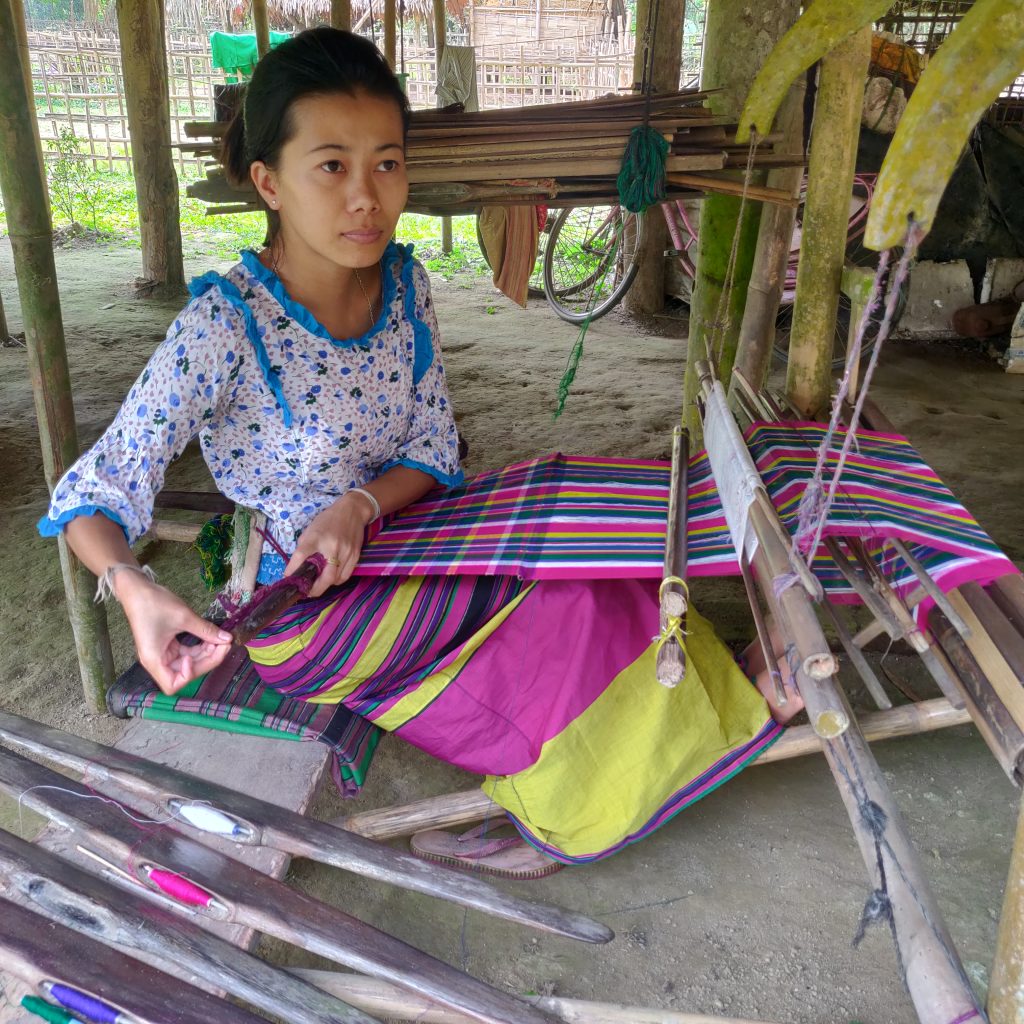
An alternative to agriculture
Finally, I ventured to Rohmoria, a village historically known for muga cultivation, now significantly affected by erosion from the Brahmaputra River. Although many homes have been lost to land erosion, the villagers have adapted by focusing on ‘eri silk farming’. I was able to witness traditional weaving, enjoy bamboo craft demonstrations, and see the impact of modern agriculture on this ancient craft.
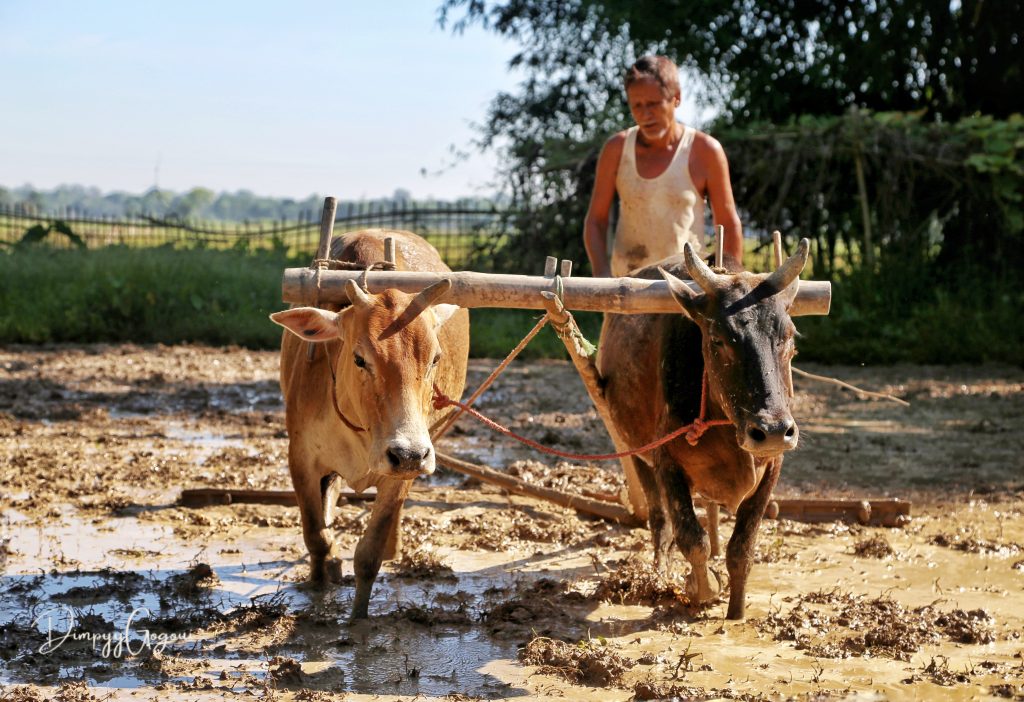
Reaching Rohmoria was an adventure in itself, as it is about 35 kilometers from Dibrugarh town via Chabua, taking roughly one hour of scenic driving through vast tea gardens.
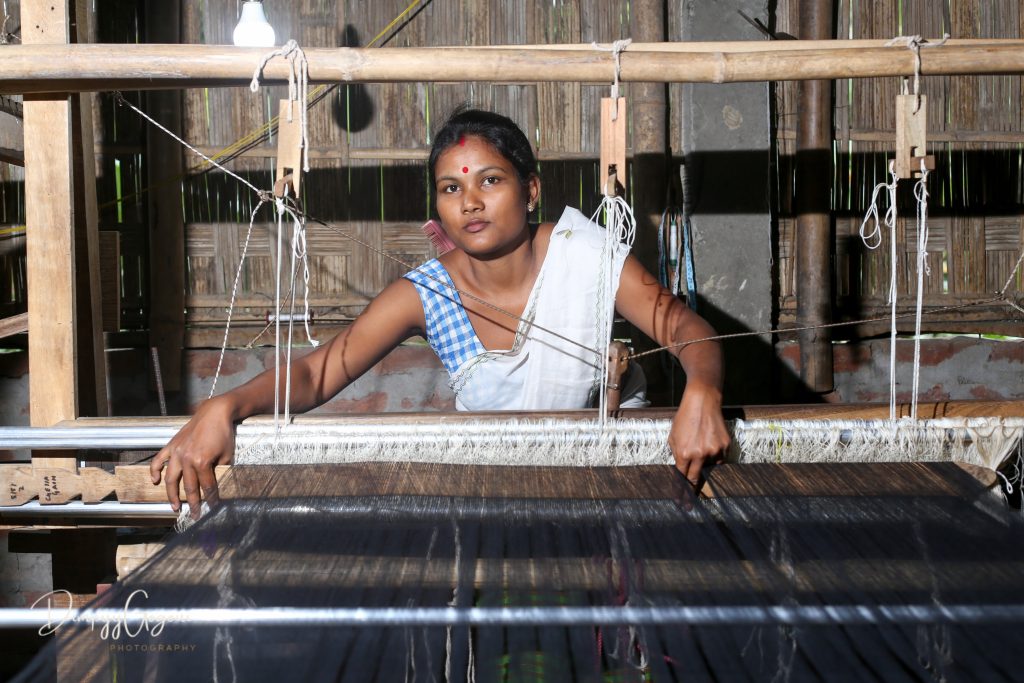
Conclusion: A Tapestry of Stories
With each visit I was reminded of my early years learning from my grandmother.
Visiting the hand weaving centers of Assam is not just about the beauty of the textiles; it is an immersion into the heart and soul of a region that thrives on creativity and tradition. Each interaction with the artisans reveals stories of resilience, heritage, and community devotion—a tapestry of experiences that connect us to the land and its people.
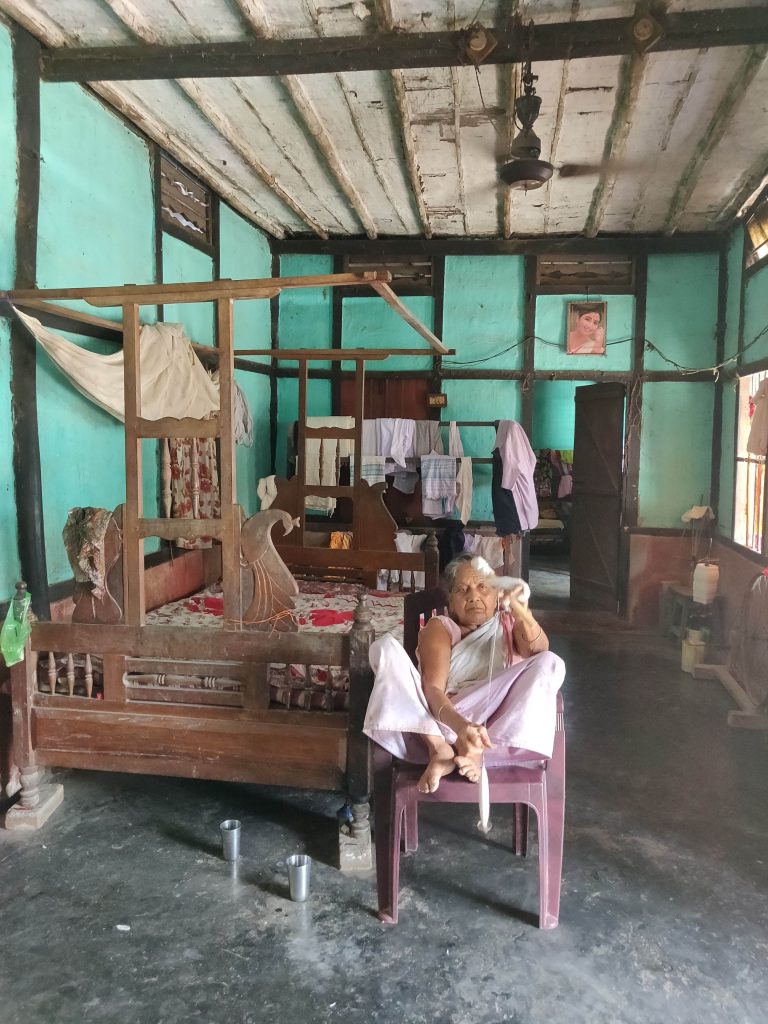
As guests who travel to Assam put it – They carry back with them not only exquisite fabrics but a deeper appreciation for the artisans who devote their lives to preserving their culture. Each weave tells a story; every piece is a reminder of the beauty of tradition, and I am grateful for being a part of this journey, the warmth and generosity that await anyone willing to explore this vibrant region.
So, come and discover Assam—where every thread weaves a connection to the past and a celebration of life in the present.

